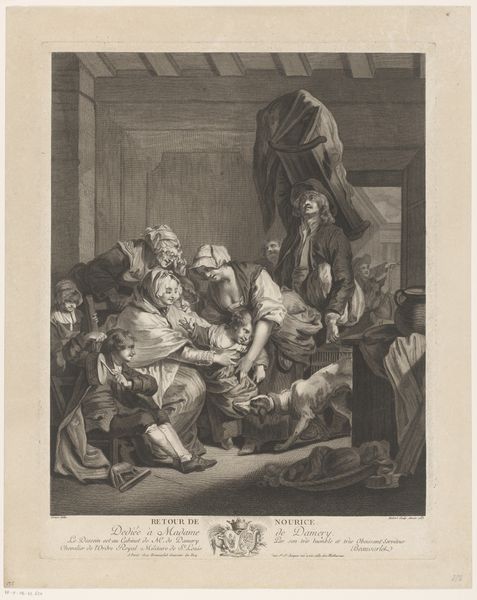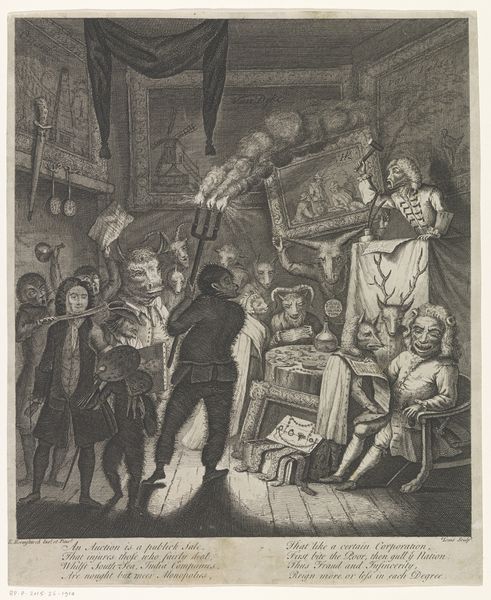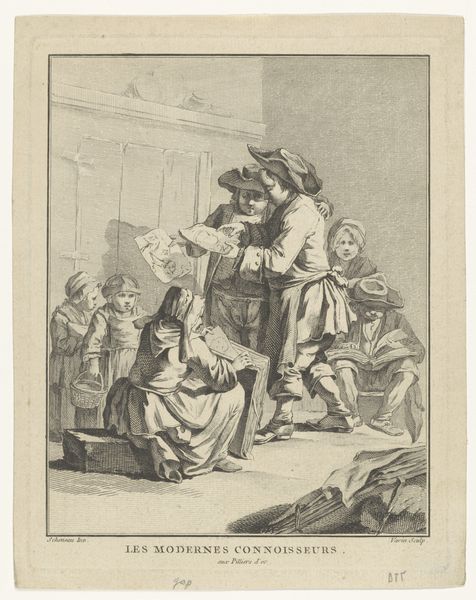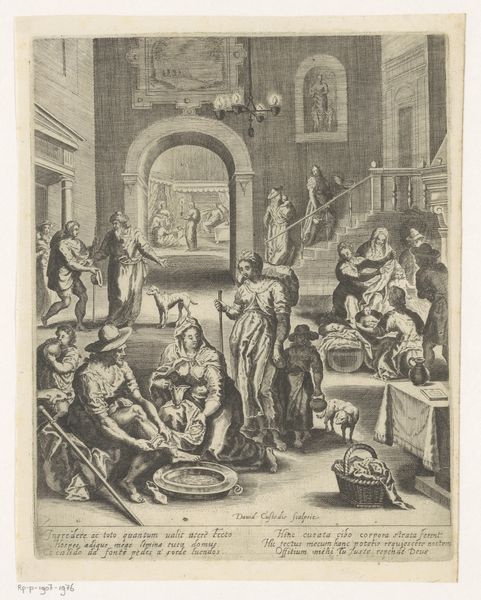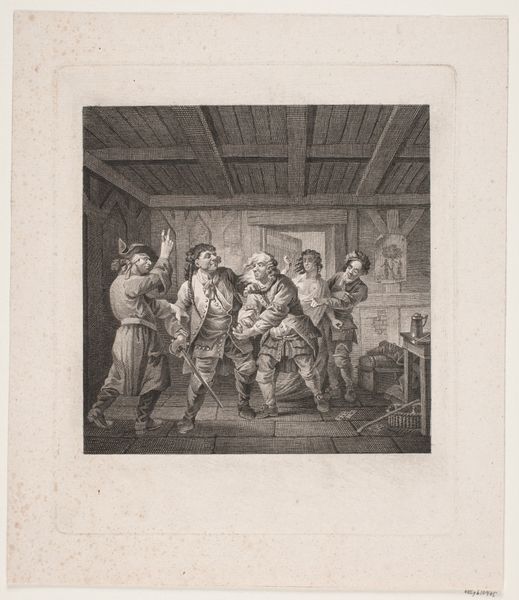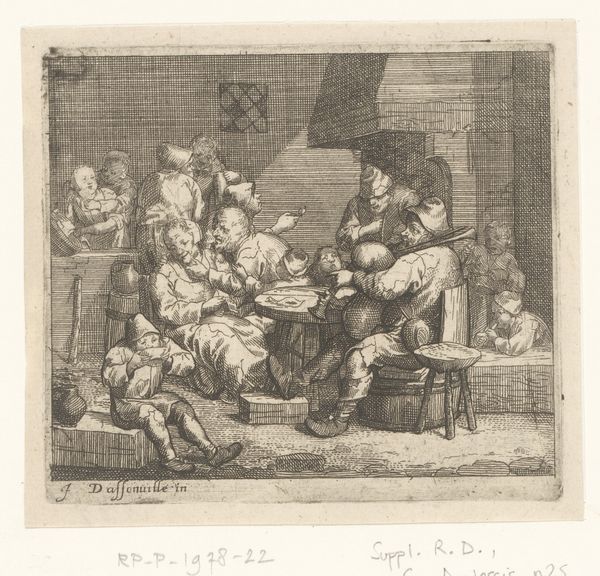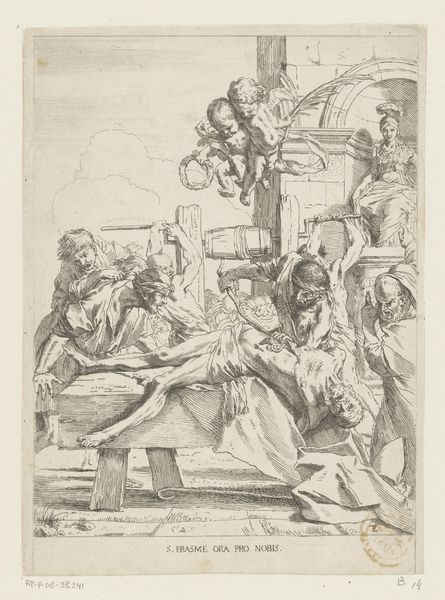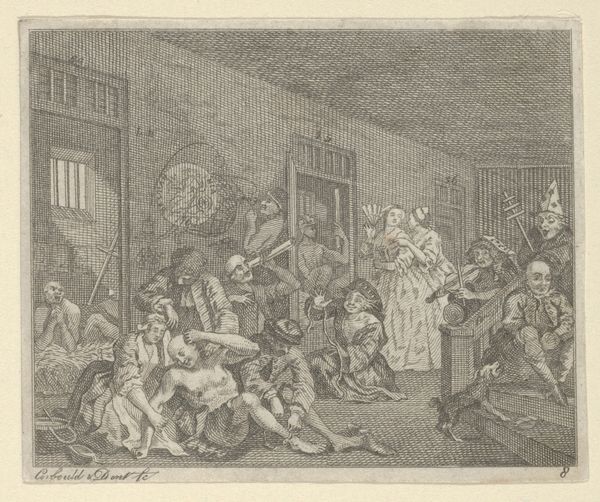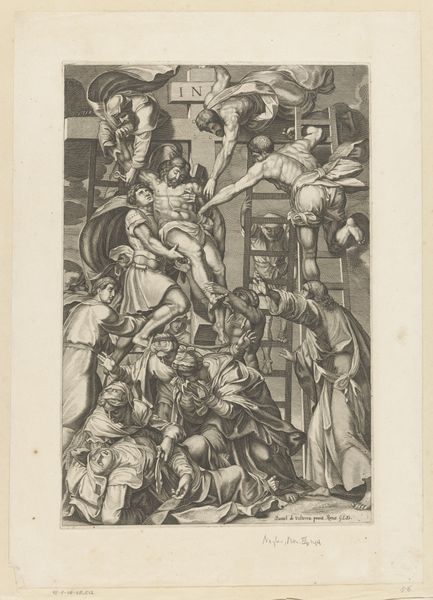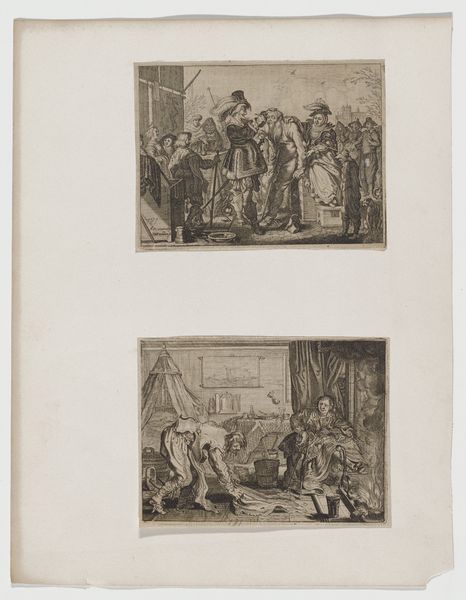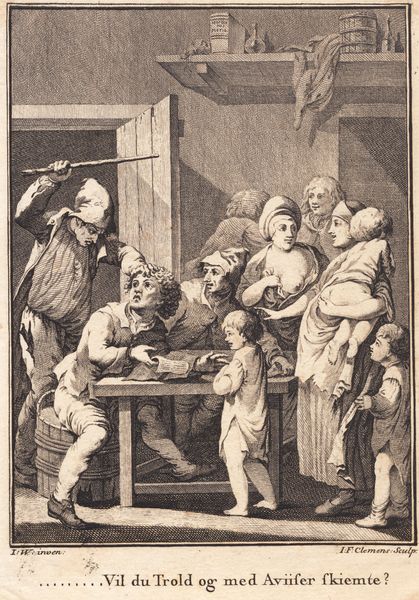
Dimensions: 22 1/2 x 19 1/8 in. (57.15 x 48.58 cm) (plate)24 x 19 9/16 in. (60.96 x 49.69 cm) (sheet)
Copyright: Public Domain
Curator: What a striking scene. It's titled "Préjugé de l'Enfance", or "Prejudice of Childhood," a print executed by François Philippe Charpentier in 1779, currently residing here at the Minneapolis Institute of Art. The technique employs engraving, drawing in pencil and charcoal. Editor: Chaotic, yet tightly composed! My eye is immediately drawn to the central cluster of figures. The somber tonal range lends it a very curious, almost melancholic atmosphere. Is that what ‘prejudice’ looked like in 1779? Curator: In some ways, yes. Consider the economic realities. Charpentier's background gives this work another dimension, born to parents running a wallpaper factory, we might reflect on production processes inherent in printmaking during the Rococo era. It really begs the question of what it meant to portray domesticity during a time of nascent industrial shift. Editor: I see how that could play in here. Looking closely at the central figure, I notice how light reflects off her garments, yet the child's face is less defined. A narrative tension, perhaps, between surface and essence? Is Charpentier suggesting we look beyond mere appearance? The distribution of values seems to emphasize the matriarch's role within this milieu. Curator: Absolutely, but it’s also an interesting comment on the commodification of childhood itself. Prints like these would have circulated widely, impacting and reinforcing certain socio-cultural values. We're not just seeing an image of family life, we're witnessing the reproduction and dissemination of an ideology. The details aren't merely aesthetic, they speak volumes about the production of childhood itself! Editor: Point taken. Considering the overall design, it's hard to miss the pronounced orthogonals provided by the interior setting, it really frames the scene and contributes to a very theatrical tableau. A semiotic reading would indicate an emphasis on traditional familial structure. Curator: And while those structures seemingly attempt order, the figures break the traditional sense of peace through dramatic gestural expressions, reminding the viewer that there can be beauty in the mundane reality, which brings this domestic setting alive with detail, suggesting perhaps it alludes to both wealth and some degree of labour. Editor: Seeing this today, after our discussion has broadened my understanding. Thanks! Curator: My pleasure. It just reminds us to continually interrogate not just what we see, but how these images functioned, and continue to function, within a complex social system.
Comments
No comments
Be the first to comment and join the conversation on the ultimate creative platform.
